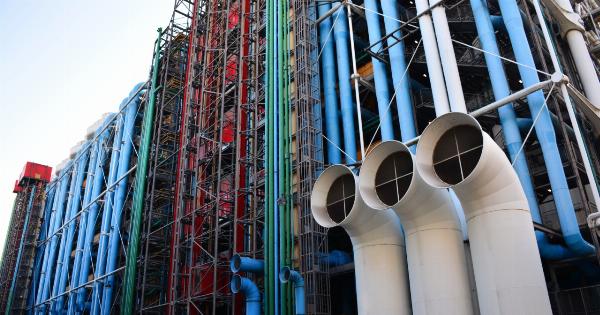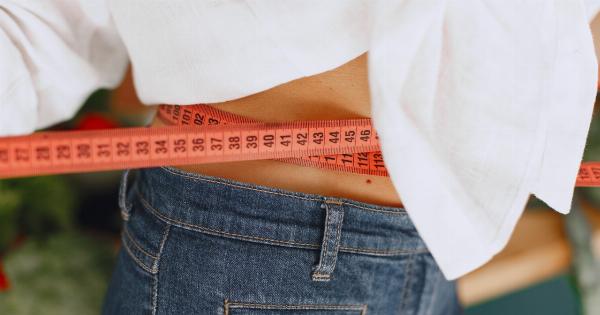In today’s society, where an increasing number of individuals are concerned about their health and appearance, there is a growing interest in finding effective ways to reduce abdominal fat.
One technique that has gained attention is the concept of local thickness, which refers to the distribution and composition of fat in different areas of the body. Understanding the impact of local thickness on abdominal fat reduction can provide valuable insights into how to achieve optimal results in body contouring.
The Science behind Abdominal Fat
Abdominal fat, also known as visceral fat, is the type of fat that accumulates around the organs in the abdominal cavity.
It is considered a major risk factor for various health conditions, including cardiovascular disease, type 2 diabetes, and certain types of cancer. Unlike subcutaneous fat, which is located directly beneath the skin, abdominal fat is metabolically active and releases inflammatory substances that can have detrimental effects on the body.
When it comes to reducing abdominal fat, there are two main approaches: overall body fat reduction and targeted fat reduction.
While overall body fat reduction can be achieved through a combination of diet and exercise, targeted fat reduction focuses on specific areas of the body, such as the abdomen.
The Role of Local Thickness
Local thickness refers to the variation in the thickness of subcutaneous fat in different regions of the body. It is influenced by factors such as genetics, hormones, and lifestyle choices.
Research suggests that individuals with a higher local thickness in the abdominal area may face more challenges in achieving significant abdominal fat reduction.
One study conducted on a group of women found that those with a higher local thickness in the abdominal region experienced slower and less pronounced decreases in abdominal fat compared to women with lower local thickness.
This suggests that the distribution of fat in the body can impact the efficiency of fat reduction efforts.
Implications for Body Contouring
Understanding the impact of local thickness on abdominal fat reduction is particularly relevant in the context of body contouring procedures.
Body contouring refers to a range of surgical and non-surgical techniques designed to improve the shape and appearance of the body by removing excess fat and skin.
For individuals seeking abdominal fat reduction through body contouring, identifying the local thickness of the abdominal area can help inform the choice of procedure and set realistic expectations.
It is important for both patients and healthcare professionals to recognize that individuals with a higher local thickness may require additional treatments or alternative approaches to achieve satisfactory results.
Factors Affecting Local Thickness
Apart from genetics, several factors can influence local thickness and impact abdominal fat reduction. These factors include:.
1. Hormonal imbalances: Hormones play a crucial role in fat accumulation and distribution. Hormonal imbalances, such as those associated with polycystic ovary syndrome (PCOS) or menopause, can contribute to increased local thickness in the abdomen.
2. Sedentary lifestyle: Lack of physical activity and a sedentary lifestyle can lead to an increase in abdominal fat and higher local thickness. Regular exercise can help reduce local thickness and improve overall body composition.
3. Poor diet: Consuming a diet high in processed foods, sugar, and unhealthy fats can contribute to increased abdominal fat and local thickness.
A balanced diet, rich in fruits, vegetables, lean proteins, and healthy fats, is key to reducing local thickness.
4. Stress: Chronic stress can disrupt hormonal balance and promote the accumulation of abdominal fat. Managing stress through techniques like meditation and regular relaxation can contribute to reducing local thickness.
Addressing Local Thickness for Optimal Abdominal Fat Reduction
While local thickness can present challenges in abdominal fat reduction, there are strategies that can help address this issue:.
1. Combination approaches: Combining different techniques, such as body contouring procedures and targeted exercises, can help address localized fat deposits and reduce local thickness in the abdominal area more effectively.
2. Customized treatment plans: Recognizing the variations in local thickness among individuals can guide the development of personalized treatment plans.
This may involve adjusting the intensity or duration of treatments to account for variations in response based on local thickness.
3. Lifestyle modifications: Encouraging individuals to adopt a healthy lifestyle that includes regular physical activity and a balanced diet can help optimize abdominal fat reduction, regardless of local thickness.
Lifestyle modifications can contribute to reducing local thickness and overall body fat.
Conclusion
The impact of local thickness on abdominal fat reduction is a significant consideration in body contouring procedures.
Understanding the science behind abdominal fat, the role of local thickness, and the factors that influence it can help inform treatment options and set realistic expectations for individuals seeking abdominal fat reduction. By addressing local thickness through tailored approaches and lifestyle modifications, optimal results can be achieved in abdominal fat reduction.





















